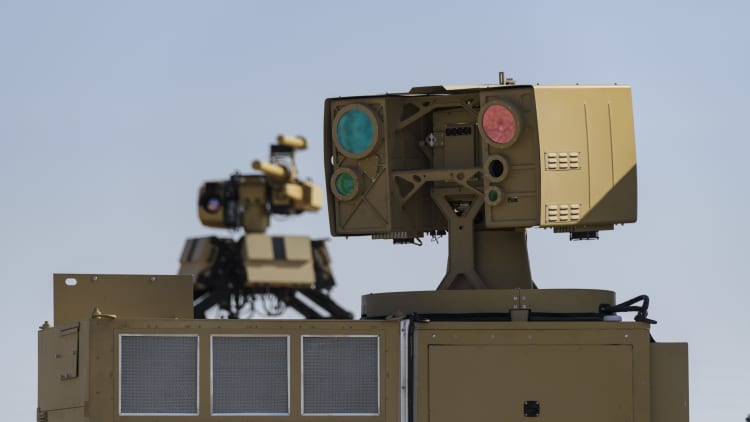The Israel-Hamas conflict has shed new light on the need to defend against threats that range from small rockets to ballistic missiles.
Israel has invested in the Iron Beam system, which produces a high-energy laser, to complement the Iron Dome batteries used to launch interceptors to take out incoming rockets.
"Interceptors are just surface-to-air missiles that shoot down incoming weapons. And there's obviously a limited number of them in the launcher at any given time, and they cost money and they're expendable," said Bryan Clark, a senior fellow at the Hudson Institute. "A laser, on the other hand, gives you essentially an infinite magazine of interception opportunities, because the laser — as long as you've got electricity — will continue to recharge, continue to shoot down incoming weapons."
Many of these directed-energy systems are now starting to be used more extensively in the field. The DE M-SHORAD, or Directed Energy Maneuver Short-Range Air Defense system, was tested by the U.S. Army in 2023 at the Yuma proving grounds. The Navy has the HELIOS, or High Energy Laser with Integrated Optical-dazzler and Surveillance, installed on the U.S.S. Preble, an Arleigh Burke-class destroyer.
"We're at an inflection point right now, when it comes to the use of these directed-energy, laser weapons," said Masao Dahlgren, a fellow with the Missile Defense Project at the Center for Strategic and International Studies. "Various services in the U.S. military are prototyping these systems, bending metal, putting things out there and experimenting with them."
Watch the video to find out what the future of laser weapons holds.
Why the Pentagon is spending billions to bring laser weapons to the battlefield



